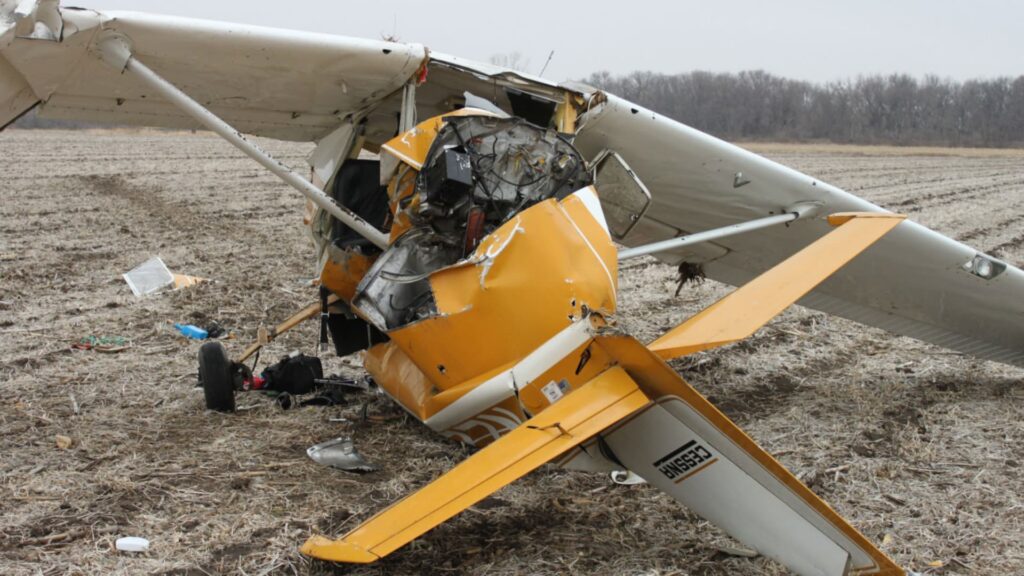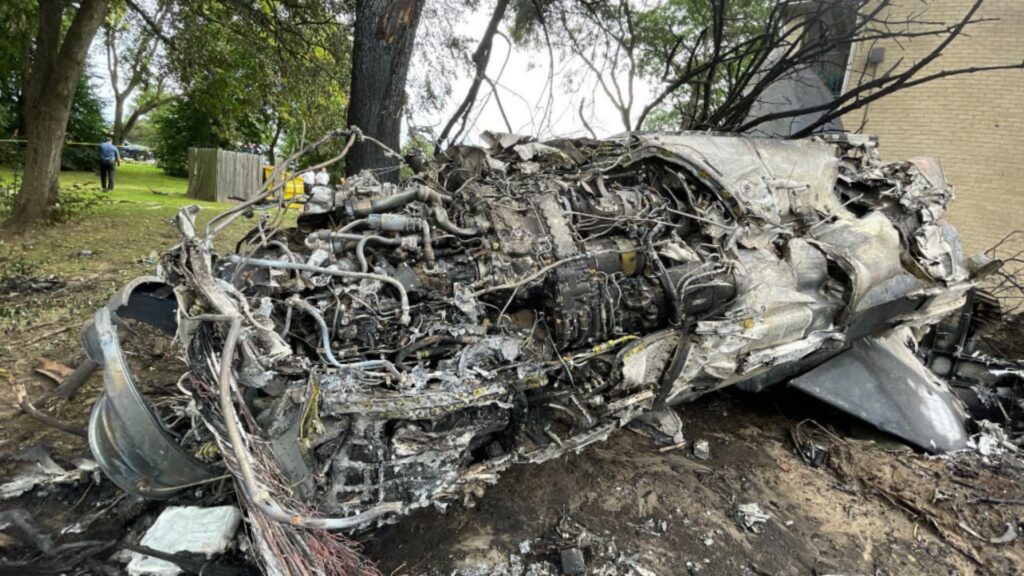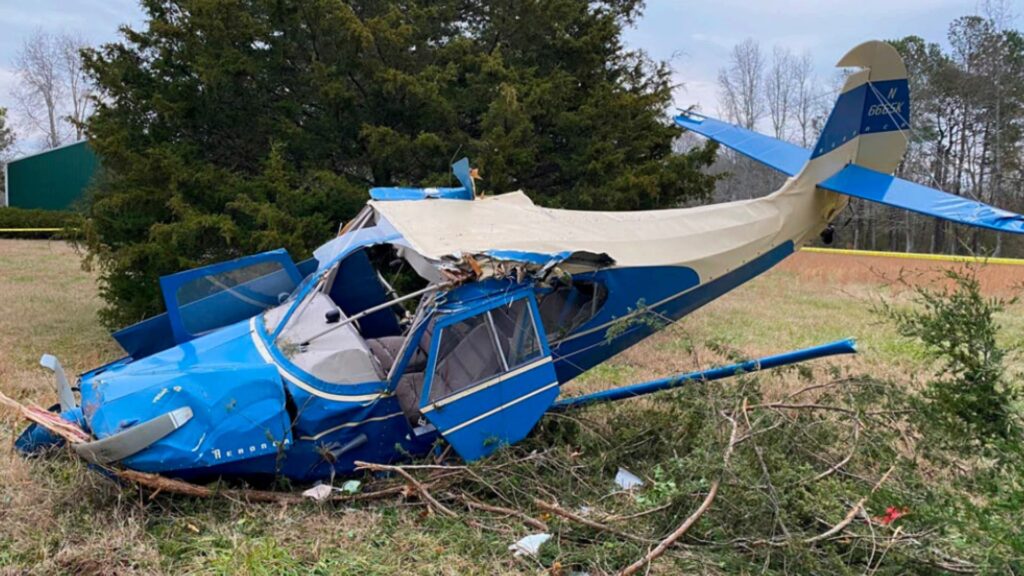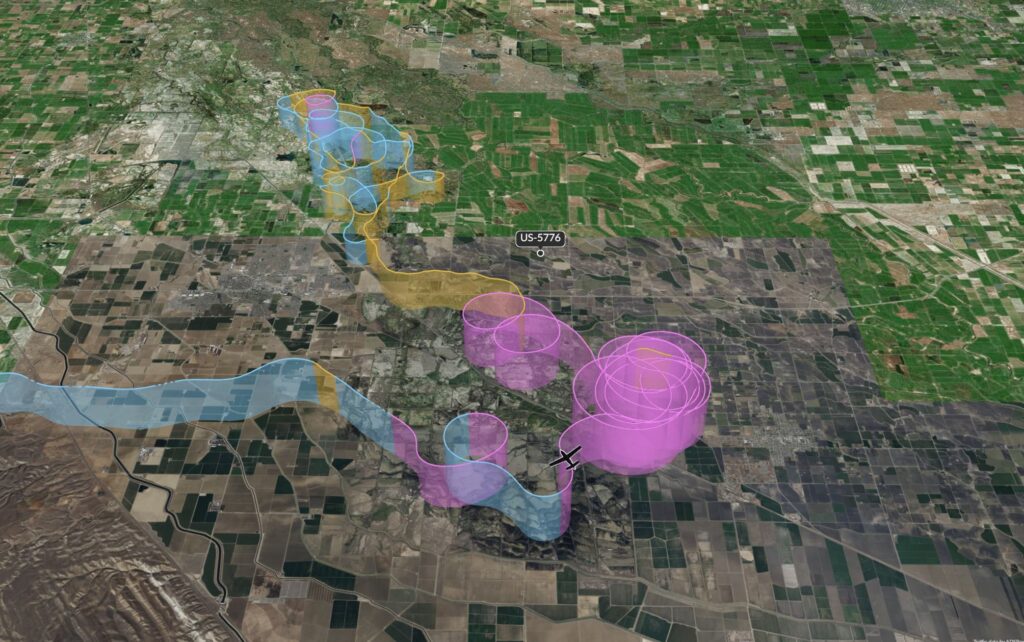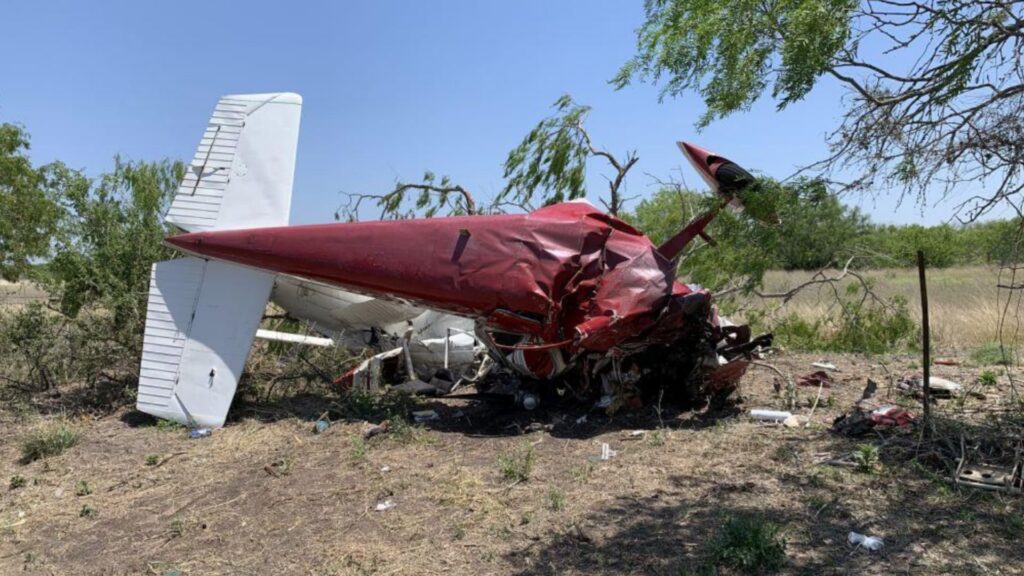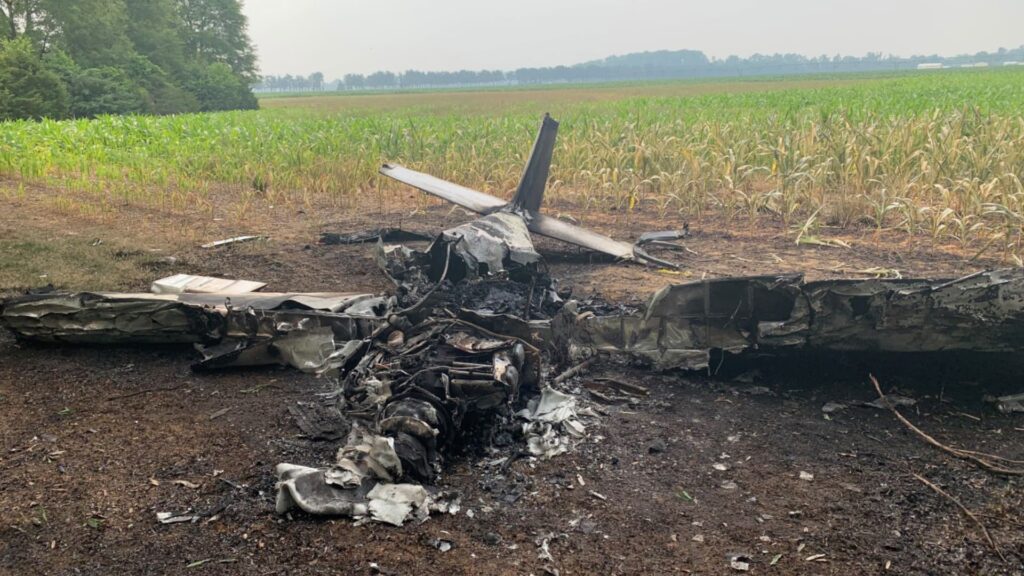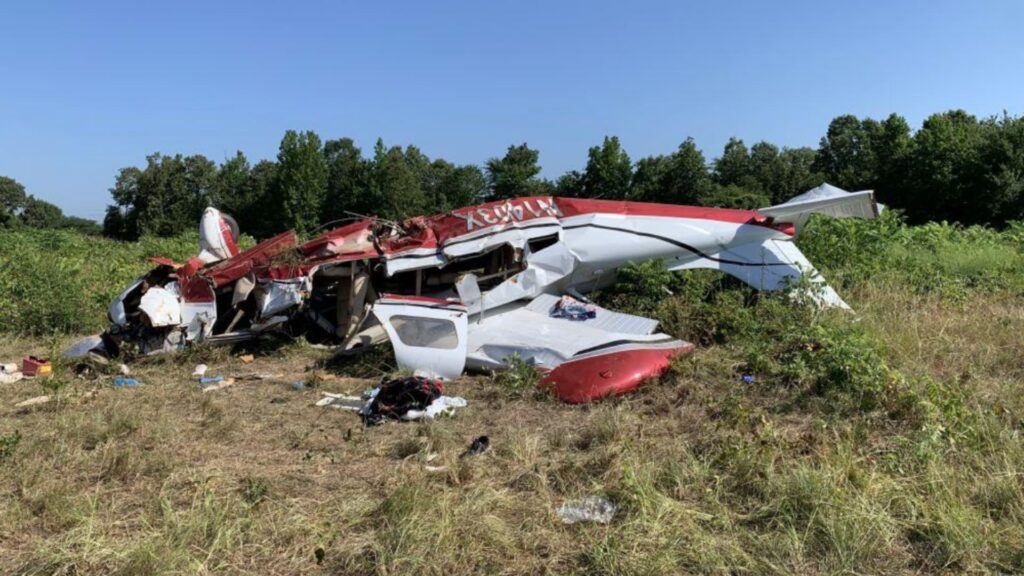This one took place on a dark January evening over Auburn, Nebraska. A Cessna 150H, N22859, departed Lincoln for some pattern work at a quiet non-towered strip and never made it back. The instructor and student were lost, and the wreckage was found about a mile south of the runway. The investigation read like a familiar story: routine training, benign weather, and a small chain of decisions that closed off options.
Who Was Flying
The right seat belonged to a 24-year-old commercial pilot and flight instructor. He held a first-class medical and had logged about 572 total hours, including 36 hours at night and roughly 12 hours instructing at night. In the make and model—a Cessna 150—he had about 15 hours. The student in the left seat was 41, a student pilot with a third-class medical, around 70 total hours, and about 20 hours in the C-150. It was a typical instructional pairing: a relatively new CFI building experience and a motivated student working the basics in the pattern.
Set-Up: A Straightforward Night Hop
They launched from Lincoln (LNK) around 18:45 local and climbed to 3,500 feet MSL for the short hop to Farington Field (K01). The plan was simple: get out to a less busy, non-towered airport and work arrivals. Weather wasn’t the problem. Visibility sat at 10 miles, winds from the north at about 12 knots, scattered clouds up around 12,000 feet, and temps right around freezing—0°C with a -2°C dew point at 19:15. But it was fully dark, moonrise wasn’t until later in the evening, and the area south of the runway was mostly fields with limited cultural lighting. That matters in a small airplane when depth perception goes flat and outside cues disappear.
The Last Data Point
ADS-B showed them descending toward Auburn from the northwest. The last hit came at 19:22:26—about 1.1 miles west of the airport—showing roughly 105 knots groundspeed and about 1,900 feet MSL. From there, radar coverage dropped out. The wreckage was later found 1.2 miles south of the threshold to Runway 34, aligned on a southeasterly heading, consistent with a left-downwind arrival into the pattern that never transitioned to a safe landing. The impact marks suggested a wings-level, moderately nose-down attitude—what you might see with a developing loss of control near the ground after an engine-power problem or a stall/spin that didn’t fully develop.
The Airplane and a Subtle Warning
The accident 150H was a 1968 model with a Continental O-200A up front—simple systems, carbureted, and familiar to most of us who learned in small Cessnas. The airplane showed no sign of pre-impact mechanical failure. Fuel was present in both tanks; the fuel bowl was clean. Flaps were retracted. The throttle was found bent but roughly mid-range, mixture near full rich, and the carb heat control was full forward—off. The propeller and spinner told a quiet story: minimal rotational scoring and polishing, the kind of look you get when the engine isn’t making much power at impact.
There was one more detail. The cockpit had flood “strip” lights installed. The instructor had previously commented that they could make the in-set round gauges harder to read at night. If you’ve flown with bright panel floods after dark, you know the effect: your pupils clamp down, the panel looks bright, and the world outside gets even darker. It doesn’t cause an accident by itself, but it doesn’t help with night adaptation or scanning either.
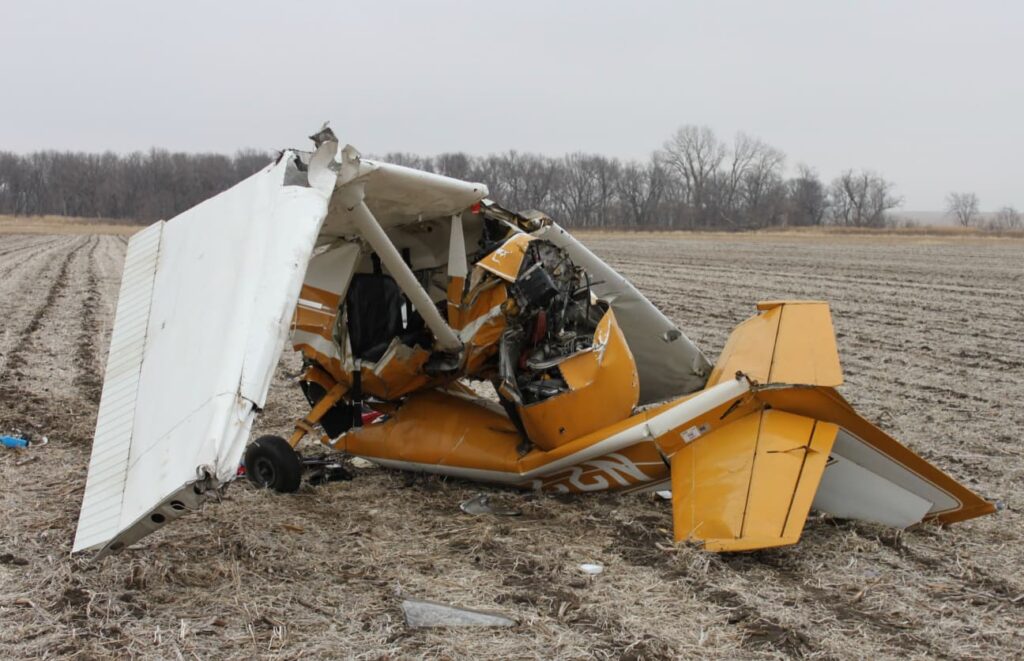
Conditions Ripe for a Quiet Engine
Let’s talk carb ice. On paper the weather was “good”—VMC, no precip, stable air. But carbureted engines don’t read TAFs; they respond to physics. With temperatures and dew points near freezing and high relative humidity, the FAA’s carb-ice charts flag those conditions as “serious risk at cruise power.” Even at reduced power, the venturi effect and fuel vaporization can drive the carb throat temperature well below ambient. Without timely carb heat, ice can form quickly, stealing manifold pressure and rpm until the engine simply can’t produce enough thrust to maintain flight. The NTSB tied the weather to exactly that risk window.
What Likely Happened in the Pattern
Putting the pieces together, it looked like they entered left downwind for Runway 34. At that point—pattern speeds and reduced power—the carburetor would have been most vulnerable. The carb heat was found off. If ice began to accrete in the carb throat, they would have felt a subtle decay in power first. In a 150 at night, heads-down time to verify power settings or troubleshoot can pull attention away from pitch and bank for just a moment. If the engine sagged and the nose came up to chase altitude, airspeed would start to erode. With dark fields and limited lighting south of the runway, visual references would have been scarce.
There was no evidence they extended flaps, and the impact marks suggested a near wings-level, moderate nose-down arrival into the field. That lines up with a late recognition of power loss and a turn or alignment for a forced landing that unraveled close to the ground. The minimal rotational damage on the prop supported the partial- or low-power state at impact.
The Official Word
The NTSB found no mechanical anomalies that would have precluded normal operation. The probable cause called out the instructor’s failure to maintain control following a loss of engine power due to carburetor icing while maneuvering for a forced landing at night. The report also noted the dark environment and the potential visibility issues from the cockpit flood lighting as contributing conditions, though it couldn’t quantify their effect.
Human Factors Worth Noting
Experience matters, and context matters more. The instructor was qualified and current, but he was still early in his CFI career with a dozen hours of night instruction and 15 hours in the 150. The student had meaningful time in type but was still a student—exactly the kind of flight where the CFI carries the larger share of risk management.
Night at an unlit rural field takes away a lot of safety margin. Pattern work often means lower power, which in these conditions invites carb ice. Add a panel lighting setup that compromises night vision and readability, and the cockpit workload climbs. None of those factors is unusual or unsafe on its own, but they stack. Training scenarios sometimes normalize that stack because the tempo feels routine. That’s the trap.
What We Can Take to the Airplane Tomorrow
Carb heat discipline. In training aircraft, especially with temps near freezing and dew points close by, it should be almost reflexive to verify carb heat on early in the descent and anytime you move the throttle toward idle. Don’t wait for a rough-running engine to convince you. If you’re in the pattern and power response feels mushy, apply full carb heat and leave it on long enough to melt ice. Expect a temporary roughness as the ice clears, then re-assess. Instructors: say it out loud so the student learns the habit.
Night pattern work deserves extra space. If you have the option, keep the pattern a touch wider and higher in the beginning so you’ve got time and altitude for troubleshooting. Fly a disciplined pitch-power-trim routine, and guard your airspeed. If the engine starts to go soft, treat it like the real thing—pitch for best glide, pick a landing area early, and commit to a plan before you’re low and slow.
Panel lighting matters more than we admit. If a lighting mod or flood strip is washing out your gauges or killing your night adaptation, fix it on the ground. Aim for just bright enough to read the needles, then stop. Contrast and adaptation are everything at night.
Finally, instructors should track the “stack” before the flight: night, rural airport, reduced power, carbureted engine, unfamiliar lighting, recent experience. Any two might be fine; four or five together deserve a slower pace and a hard plan for power loss in the pattern.
Closing Thoughts
This wasn’t a dramatic weather fight or a complex mechanical failure. It was a small airplane at night, a normal training timeline, and a set of conditions that quietly moved the odds in the wrong direction. The lesson is a humble one: in the pattern, especially after dark, keep carb heat ahead of the airplane, keep airspeed honest, and keep the workload low enough that you always have a little bandwidth left for the unexpected. That’s how you make a routine lesson stay routine.

